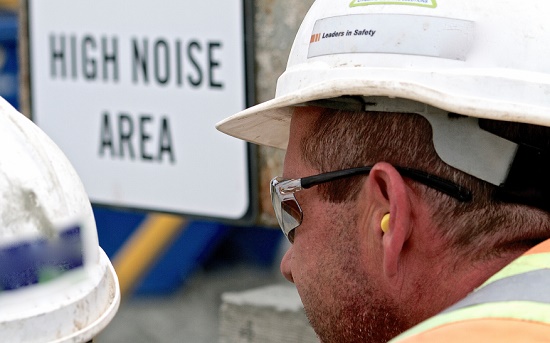
When thinking over the many factors that go into your career choice, we bet that your long-range hearing health is pretty low on the priority list—if it’s there at all. We understand.
And while we don’t think that your ability to hear in the future should determine your career choice, we do think you should be knowledgeable of the risk—so that you can utilize proper hearing protection and comply with the best practices to preserve your hearing.
As stated by the CDC, work-related hearing loss is one of the most prevalent work-related ailments in the US. Twenty-two million workers are subjected to detrimental noise levels on the job, and an estimated $242 million is expended annually on worker’s compensation for hearing loss.
So this isn’t a minor problem; the personal and social consequences are huge.
If you choose to follow one of the following eight career paths—or presently work in one—take extra precaution to look after your hearing.
Here are 8 of the loudest industries.
1. Military – Virtually all firearms can create 140 decibels (dB) of noise. This is substantially above the safe limit of 85 dB, and has the potential to create instantaneous and irreversible hearing damage. Explosions and other sounds of warfare add to the danger. This is why hearing loss and other hearing problems represent the most widespread injuries for veterans.
2. Music – Rock concerts can reach over 110 decibels, subjecting performers to hours of continuously damaging noise. That explains why research has demonstrated that musicians are four times more likely to develop noise-induced hearing loss—and 57 percent more likely to suffer from tinnitus—than other people.
3. Manufacturing – As reported by the Bureau of Labor Statistics, hearing loss is the most regularly documented work-related ailment in manufacturing. Manufacturing devices can reach decibel levels of well over 100.
4. Carpentry – Similar to manufacturing, carpenters use machinery that can reach dangerous decibel levels. A power saw alone can attain 110 dB.
5. Aviation – A jet take-off at 25 meters registers at approximately 140-150 decibels. The decibel level decreases as distance increases, but pilots and airport staff should protect against the noise.
6. Emergency Response – Ambulance and fire engine sirens can emit decibel levels of over 130. In fact, a group of firefighters has recently taken legal action against a siren manufacturer after experiencing hearing loss on the job.
7. Farming – Some tractors and agricultural machinery can produce well over 100 decibels. Agricultural workers are advised to keep machinery running smoothly, to take periodic breaks from the noise, and to use hearing protection.
8. Racing – The sound of a single race car can reach over 120 decibels, and a race in full action can reach 140. Participants, fans, and employees at racing events are all at risk for developing hearing loss.
Bear in mind, extended exposure to any sound above 85 decibels enhances your risk for developing hearing loss. If you find yourself in a high-volume profession, take these three precautions (if you can’t avoid the source of the noise):
- Increase your distance from the sound source when possible
- Take occasional rest breaks from the sound to limit time of exposure
- Wear custom earplugs to limit volume
Taking these three simple steps (specifically # 3) will allow you to pursue the career of your choosing without the need to forfeit your ability to hear later in life—because wearing earplugs now beats wearing hearing aids later.

